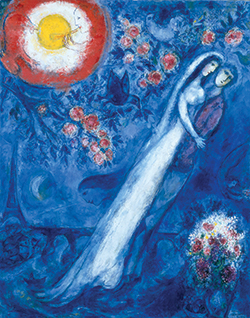This article comes from the May 2015 edition of Columbia Magazine.
The family, the single most humanizing institution in history, is crucial to the future of our civilization
Editor’s Note: Rabbi Lord Jonathan Sacks, former Chief Rabbi of the United Kingdom and a member of the House of Lords, was a keynote speaker at an international conference at the Vatican titled “The Complementarity of Man and Woman,” sponsored by the Congregation for the Doctrine of the Faith Nov. 17-19, 2014. This text is an abridged version of his Nov. 17 address and is reprinted with permission.
I want to begin our conversation by telling the story of the most beautiful idea in the history of civilization: the idea of the love that brings new life into the world. There are, of course, many ways of telling the story, and this is just one. But to me it is a story of key moments, each of them
surprising and unexpected.
The first, according to a report in the press on Oct. 20, 2014, took place in a lake in Scotland 385 million years ago. It was then, according to this new discovery, that two fish came together to perform the first instance of sexual reproduction known to science. Until then, all life had propagated itself asexually, which is far simpler and more economical than the division of life into male and female, each with a different role in creating and sustaining life.
When we consider, even in the animal kingdom, how much effort and energy the coming together of male and female takes, in terms of displays, courtship rituals, rivalries and violence, it is astonishing that sexual reproduction ever happened at all. Biologists are still not quite sure why it did. Some say it offers protection against parasites or immunities against disease. Others say it is simply that the meeting of opposites generates diversity. But one way or another, the fish in Scotland discovered something new and beautiful that’s been copied ever since by virtually all advanced forms of life. Life begins when male and female meet and embrace.
Monotheism, Monogamy, and Equality
The second unexpected development was the unique challenge posed to Homo sapiens by two factors: Since we stood upright, which constricted the female pelvis, and we had bigger brains, which meant larger heads, human babies had to be born more prematurely, and so needed parental protection for much longer. This made parenting more demanding, the work of two people rather than one. Among most primates, fathers don’t even recognize their children, let alone care for them. Elsewhere in the animal kingdom motherhood is almost universal but fatherhood is rare.
So what emerged along with the human person was the union of the biological mother and father to care for their child.
Then came culture, and the third surprise.
The most obvious expression of power among alpha males, whether human or primate, is to dominate access to fertile women and thus maximize the passing on of your genes to the next generation. Hence polygamy, which exists in 95 percent of mammal species and 75 percent of cultures known to anthropology.
That is what makes the first chapter of Genesis so revolutionary with its statement that every human being, regardless of race, culture, creed or class is created in the image and likeness of God. We know that in the ancient world it was kings, emperors and pharaohs who were held to be in the image of God. So Genesis is saying that we are all royalty. We each have equal dignity in the kingdom of faith under the sovereignty of God.
From this, it follows that the norm presupposed by the story of Adam and Eve is: one woman, one man. Monogamy, however, did not immediately become the norm, even within the world of the Bible. But many of its most famous stories, about the tension between Sarah and Hagar, or Leah and Rachel and their children, or David and Bathsheba, or Solomon’s many wives, are all critiques that point the way to monogamy.
And there is a deep connection between monotheism and monogamy, just as there is, in the opposite direction, between idolatry and adultery. Monotheism and monogamy are about the all-embracing relationship between I and Thou, myself and one other — be it a human, or the divine Other.
Click here to continue reading


No comments:
Post a Comment